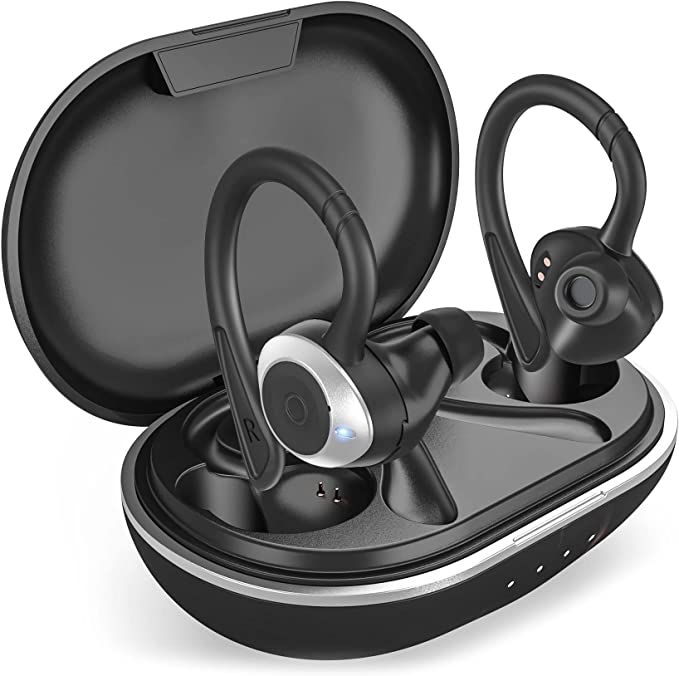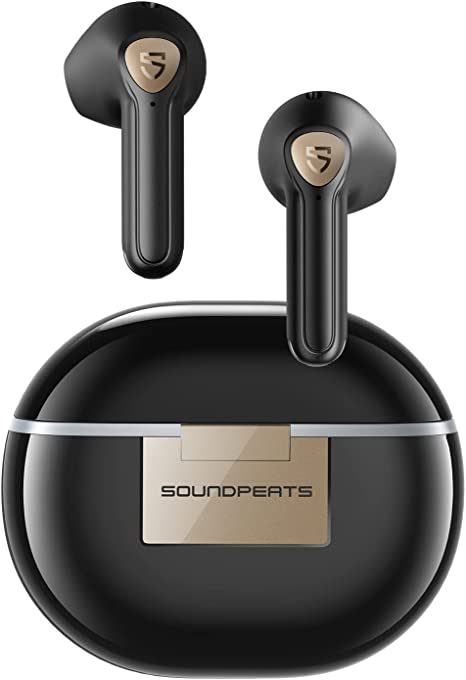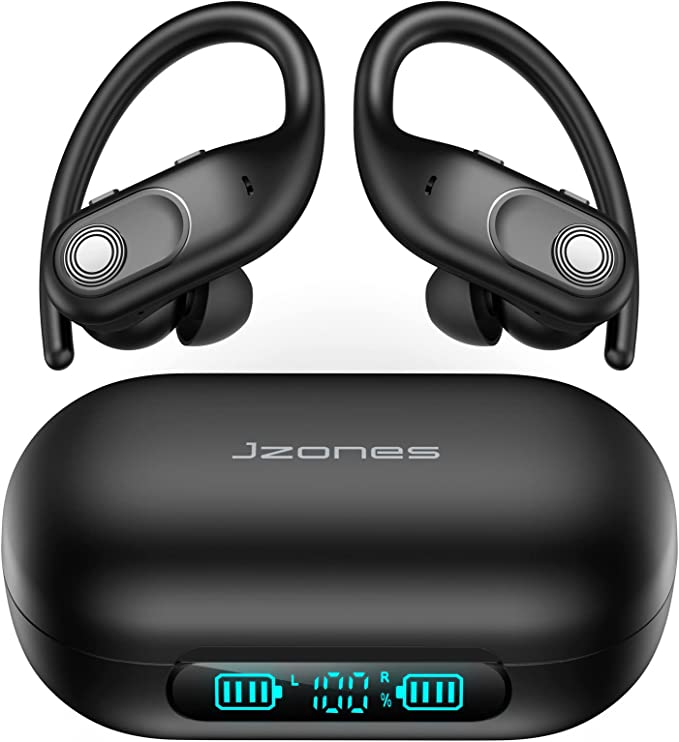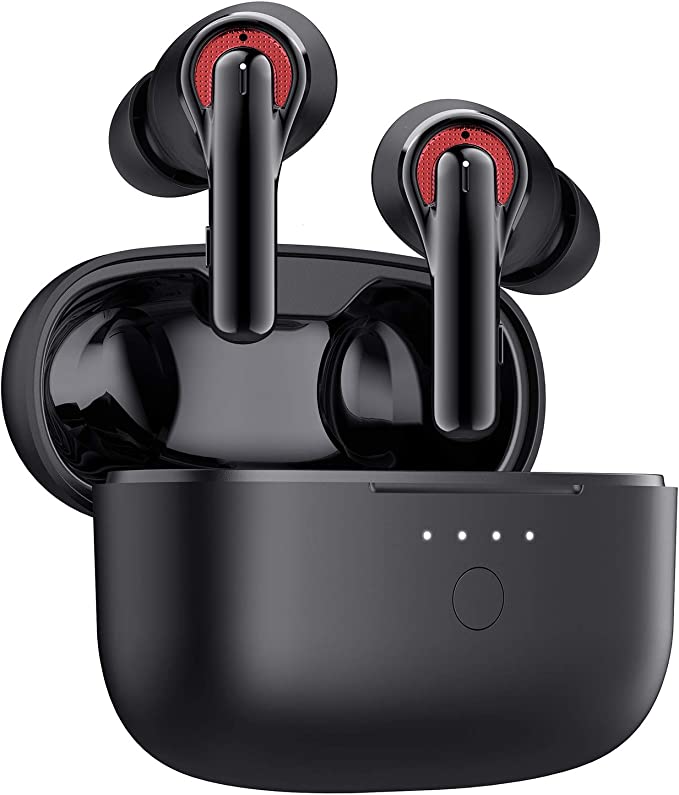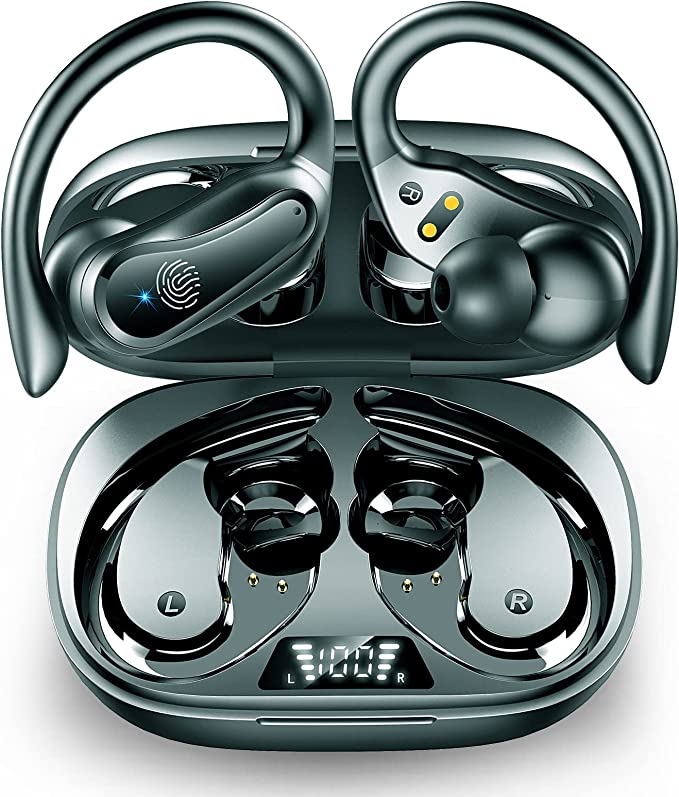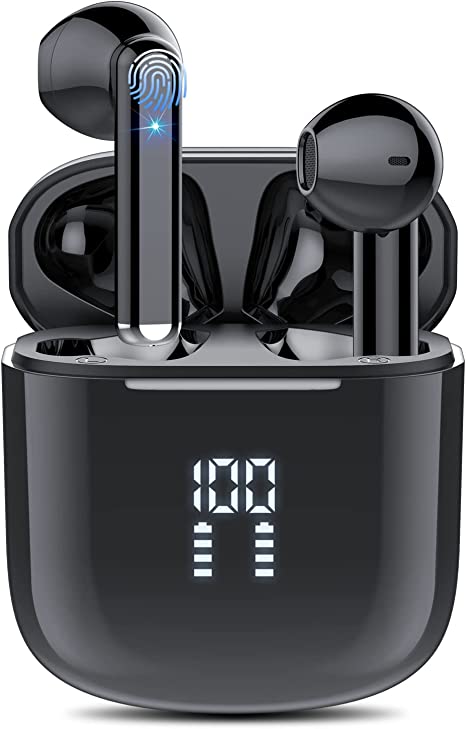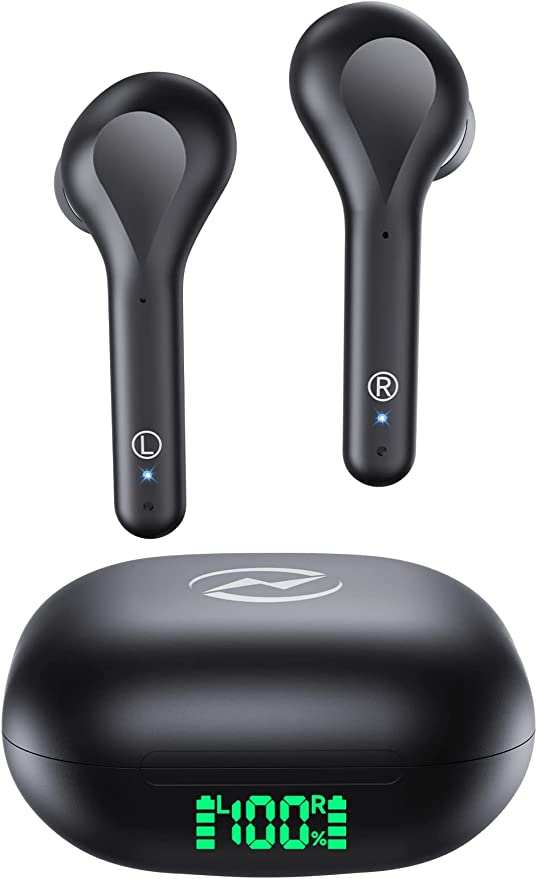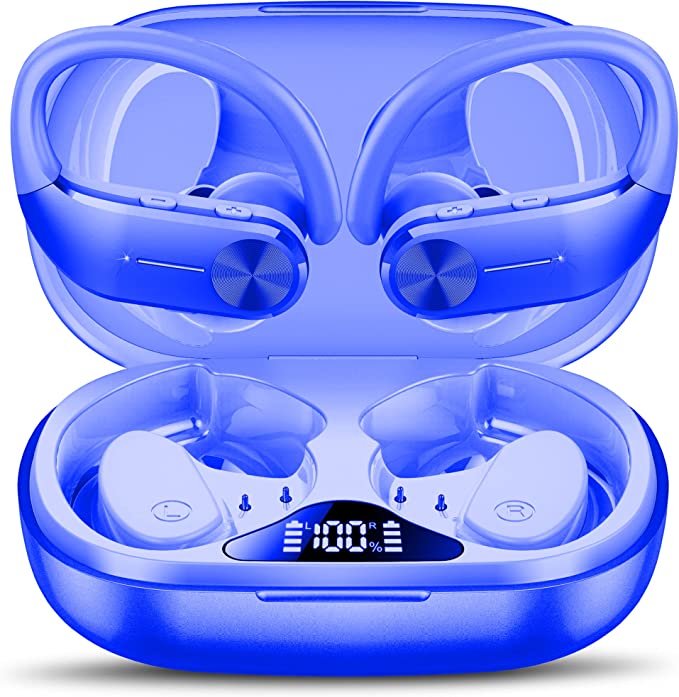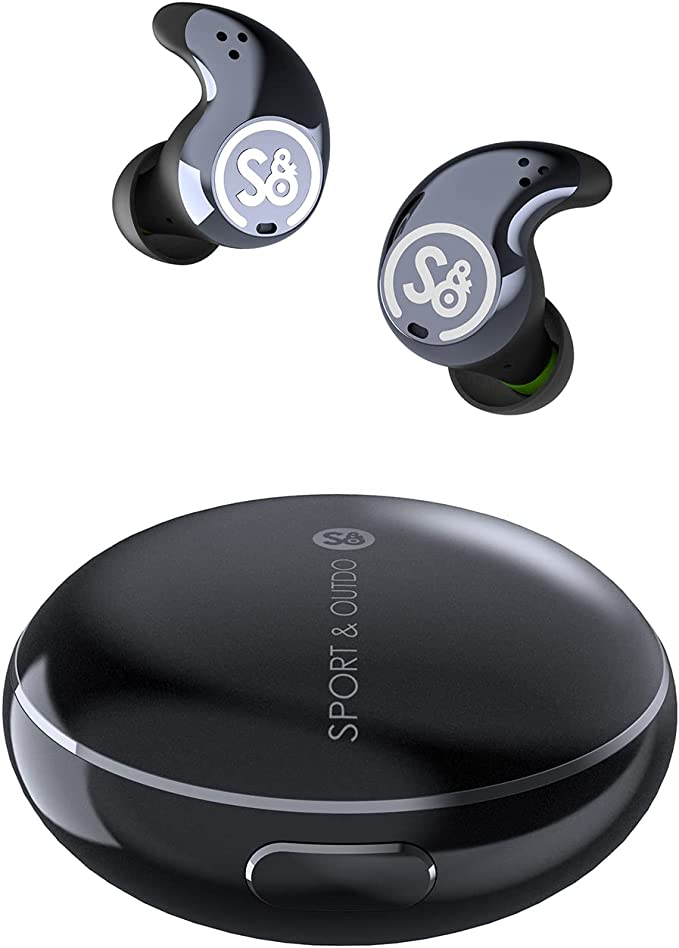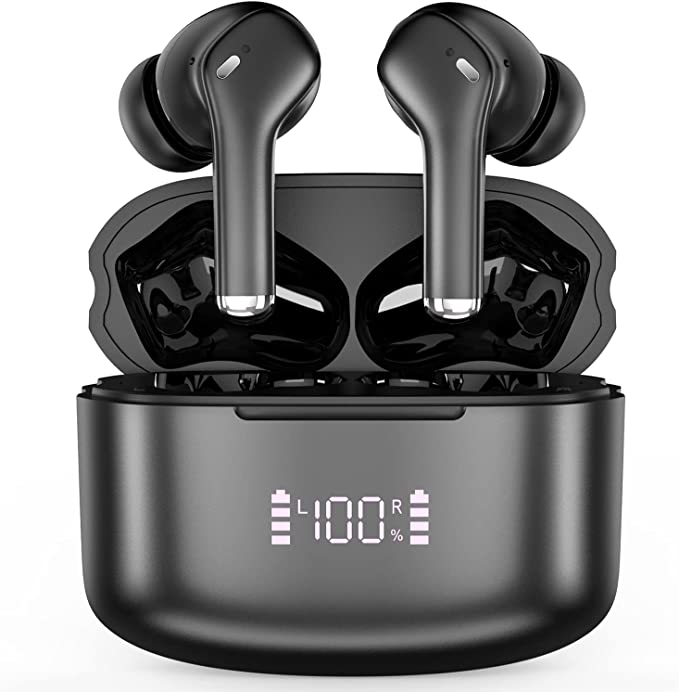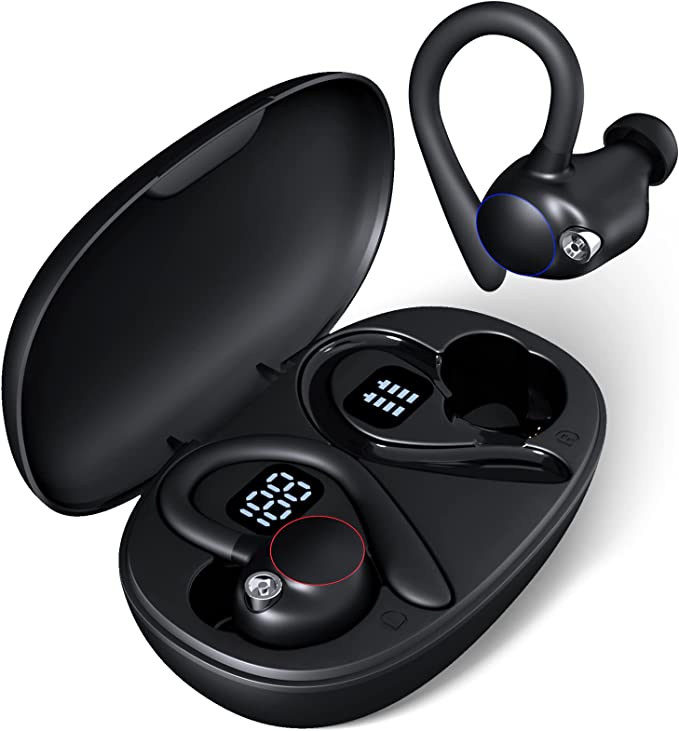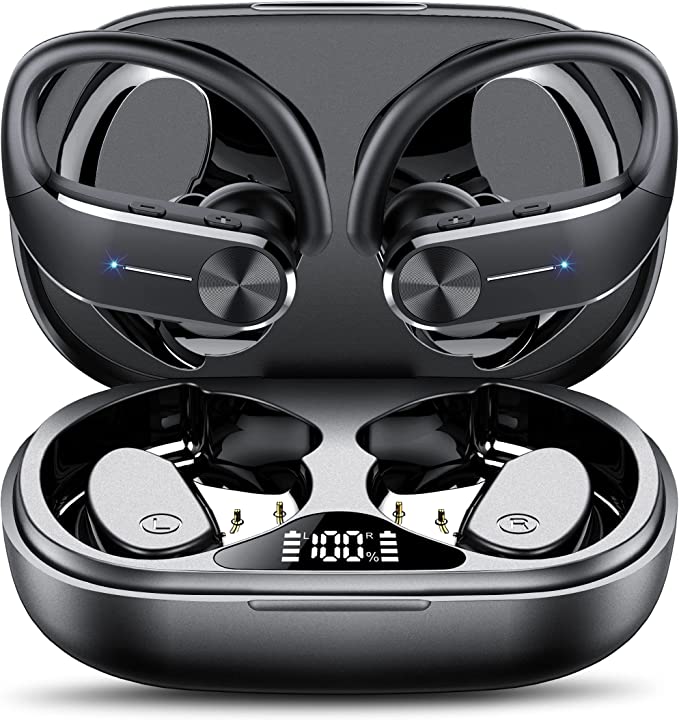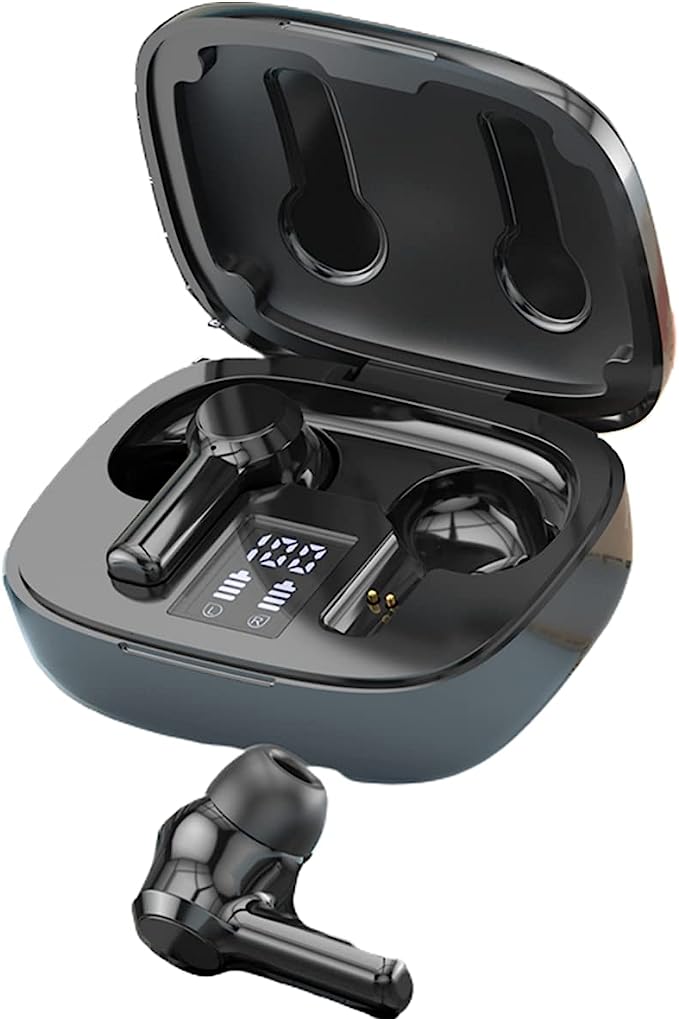MoreJoy M2 Wireless Earbuds: The Science of Seamless Sound, Clear Calls, and All-Weather Listening
Update on May 14, 2025, 2:55 p.m.
It’s a modern marvel we often take for granted: slipping two tiny pieces of plastic into our ears and instantly being transported – to a concert hall, a crucial business call, or a motivational podcast during a morning run. These wireless earbuds, so unassuming in size, are veritable treasure troves of sophisticated technology. But have you ever paused to consider the intricate dance of physics and engineering that makes this seamless audio experience possible?
Today, let’s embark on a journey of discovery. We’ll peel back the layers of these everyday companions, using the MoreJoy M2 Wireless Earbuds not as a product to be reviewed in isolation, but as a fascinating case study – a lens through which we can explore the scientific principles that power much of the wireless audio world we inhabit. As an audio technology researcher, I find endless fascination in how these complex systems are miniaturized and made accessible, and I’m thrilled to share some of that with you.

The Unseen Dance of Connection: Bluetooth 5.2 – Your Wireless Handshake
Remember the early days of wireless audio? The frustrating dropouts, the audio lagging maddeningly behind video, the pairing processes that felt more like arcane rituals? While no wireless technology is entirely infallible, the journey to our current state of relatively stable connections has been a significant one, and much of that progress in the personal audio sphere is thanks to the evolution of Bluetooth.
The MoreJoy M2 earbuds, according to their specifications, feature Bluetooth 5.2. Now, “Bluetooth” itself is a charmingly named technology, a nod to Harald Bluetooth, the 10th-century Danish king famed for uniting disparate Scandinavian tribes. Just as King Harald brought people together, Bluetooth technology aims to seamlessly connect our devices. Version 5.2 represents a mature iteration of this standard, bringing several key enhancements designed to create a more robust and efficient wireless handshake between your earbuds and your audio source, like a smartphone or laptop.
What does “5.2” actually mean for your ears? Think of it as a more skilled data juggler and a more perceptive communicator. Bluetooth 5.2 incorporates features that can lead to improved connection stability, meaning fewer of those annoying audio skips, even in environments bustling with other wireless signals. It’s also designed for greater power efficiency, which is crucial for small, battery-operated devices like earbuds, helping them last longer on a single charge. Furthermore, advancements in how data is transmitted can contribute to lower latency. Latency, in simple terms, is the delay between when an audio signal is sent from your device and when you actually hear it. High latency is what causes that distracting out-of-sync feeling when watching videos. Bluetooth 5.2 includes mechanisms that strive to minimize this delay, making for a smoother multimedia experience.
The MoreJoy M2 product information highlights its “stable, low-latency wireless connection for high-quality sound (music or call)” and “One-Step Pairing.” This latter feature, where the earbuds automatically reconnect to your phone after the initial setup, is a direct beneficiary of modern Bluetooth protocols that streamline the discovery and connection process, saving you from complicated re-pairing gymnastics each time.
Of course, the world of True Wireless Stereo (TWS) earbuds, where each earbud often maintains its own connection or a coordinated one, is inherently complex. While Bluetooth 5.2 offers significant advantages, factors like environmental interference (too many competing Wi-Fi or Bluetooth signals in one area), the quality of the antenna design in both the earbuds and the source device, and even physical obstructions can still occasionally challenge any wireless link. This is a general consideration for all wireless audio, and isolated user experiences across various TWS products sometimes note intermittent connection quirks. The goal of standards like Bluetooth 5.2 is to make these instances the exception rather than the rule.

Finding Your Voice in the Cacophony: The Art of ENC Microphones
Imagine this: you’re navigating a bustling city street, or perhaps working from a lively café, and an important call comes through. In these moments, the clarity of your voice to the person on the other end is paramount. This is where a technology known as Environmental Noise Cancellation (ENC), specifically for microphones, steps into the spotlight. The MoreJoy M2 earbuds state they utilize a “Built-in mic in each bluetooth headphones utilizes call noise cancellation to ensure clear calls.”
It’s important to distinguish ENC from its more commonly known cousin, Active Noise Cancellation (ANC). While ANC is primarily designed to quiet your listening environment, creating an immersive soundscape by actively generating anti-noise to cancel out ambient sounds before they reach your ears, ENC focuses on the microphone’s input. Its mission is to ensure that your voice is transmitted clearly, free from the distracting sounds of your surroundings.
Think of ENC as a smart filter for your microphone. It employs sophisticated algorithms, often powered by a Digital Signal Processor (DSP)chip within the earbuds, to analyze the soundscape being captured by the microphone(s). These algorithms are trained to differentiate the characteristic patterns of human speech from the more random or steady patterns of background noise – the rumble of traffic, the chatter of a crowd, the whir of an air conditioner. Once identified, the system works to suppress these unwanted environmental sounds before your voice is transmitted. The result, as the M2 aims for, is “high-quality conversations anytime, anywhere,” allowing the person you’re speaking with to hear you, not your environment.
The effectiveness of ENC can depend on several factors, including the number and placement of microphones (some advanced systems use multiple microphones to better triangulate your voice), the sophistication of the noise-filtering algorithms, and the nature of the background noise itself. While the goal is crystal-clear communication, it’s a complex acoustic challenge. Some users of various TWS earbuds, for instance, occasionally report that in certain very specific or extremely noisy conditions, their voice might still sound a touch “muffled” or that some ambient sound still bleeds through. This isn’t necessarily a failing of a specific device, but rather reflects the inherent difficulties in perfectly isolating a voice from a dynamic and unpredictable sound environment using tiny, power-constrained electronics. However, a well-implemented ENC system, as aspired to by the M2, generally offers a significant improvement in call clarity over microphones without such technology.

Crafting Your Personal Concert: Hi-Fi Stereo & the Mighty 13mm Drivers
For many of us, wireless earbuds are our personal escape pods, transforming a mundane commute or a quiet evening into a private concert. The MoreJoy M2 earbuds promise “HiFi sound quality” and a “concert-like stereo sound field effect,” delivered through 13mm drivers. But what do these terms actually mean for your listening pleasure?
“Hi-Fi” is short for High Fidelity. In the audio world, this refers to the ability of a sound system to reproduce the original recording with a high degree of accuracy and minimal distortion. It’s about hearing the music as the artists and sound engineers intended, with clarity across the entire frequency spectrum – from the deep thrum of the bass to the sparkling highs of the cymbals.
At the very heart of any earbud or headphone, the component responsible for actually creating the sound you hear, is the driver. The 13mm drivers in the MoreJoy M2 are, most likely, dynamic drivers – a very common and effective type. Imagine a miniature, high-tech drum. A dynamic driver consists of a diaphragm (a thin, flexible membrane, like the drum skin), a voice coil (a coil of fine wire attached to the diaphragm), and a magnet. When the electrical audio signal from your device flows through the voice coil, it creates a fluctuating magnetic field. This field interacts with the permanent magnet, causing the voice coil – and the attached diaphragm – to vibrate rapidly back and forth. These vibrations create pressure waves in the air, which your eardrums perceive as sound.
The size of the driver – 13mm in this instance – can influence its sonic characteristics. Generally speaking, a larger diaphragm has the potential to move more air, which can be beneficial for reproducing lower frequencies (bass) with more authority and depth. However, driver size is just one piece of the puzzle; the quality of the diaphragm material, the magnet strength, the enclosure design, and the tuning of the earbud all play crucial roles in the final sound signature.
The goal of a “concert-like stereo sound field effect” is to create a sense of space and dimension in your music. Good stereo imaging allows you to perceive the placement of different instruments and vocals within a virtual stage in your head, making the listening experience more immersive and engaging. This is achieved through careful matching of the left and right channel drivers and overall acoustic design that allows for clear separation and accurate reproduction of the stereo information encoded in the music. While the subjective experience of “good sound” can vary greatly from person to person (and can be influenced by factors like the quality of the ear tip seal), a well-engineered 13mm driver within a thoughtfully designed earbud certainly has the potential to deliver a rich, detailed, and enjoyable Hi-Fi listening experience. The positive feedback from one user in the provided data mentioning “La qualité de son c’est magnifique” (Sound quality is magnificent) for music listening speaks to this potential.

Audio That Laughs in the Face of Rain: The Resilience of IPX7 Waterproofing
Life is full of anTWSearbudmoisture – a sweaty gym session, an unexpected downpour during your commute, or even an accidental splash from a nearby drink. For those who lead active lifestyles or simply crave peace of mind, a degree of water resistance in their electronics is highly valued. The MoreJoy M2 earbuds boast an IPX7 waterproof rating.
Let’s decode that “IPX7.” The “IP” stands for Ingress Protection, and it’s a standard defined by the International Electrotechnical Commission (IEC) to classify the degree of protection provided by enclosures of electrical equipment against the intrusion of solid objects (like dust) and liquids.
The first digit after “IP” relates to protection against solids. In IPX7, the “X” signifies that the earbuds haven’t been officially rated for dust protection, or that dust protection is not considered a primary feature for this specific rating focus.
The second digit, the “7” in this case, is what tells us about liquid protection. An IPX7 rating means the device is protected against the effects of temporary immersion in water under specific, standardized conditions – typically, this means submersion in up to 1 meter (about 3.3 feet) of fresh water for up to 30 minutes.
So, what does this mean in practical terms? An IPX7 rating suggests the MoreJoy M2 earbuds are well-equipped to handle sweat from intense workouts (the product description even highlights “Specific Uses For Product: Sport”) and can survive being caught in the rain. They might even withstand an accidental, brief drop into a puddle or sink, provided they are retrieved quickly. The product description mentions they are “Made of carefully selected premium nano-materials toprotect splashproof.” This likely refers to specialized hydrophobic (water-repellent) coatings applied to internal components or the use of very tight seals and water-resistant barriers in their construction to prevent water from reaching sensitive electronics.
It’s important to have realistic expectations, however. IPX7 is about water resistance, not being fully waterproof for all conditions. It doesn’t mean you should go swimming with them, nor does it typically cover exposure to saltwater or other liquids like sugary drinks, which can be corrosive. Also, charging ports usually need to be completely dry before you plug them in to avoid damage. Nevertheless, for everyday encounters with moisture, an IPX7 rating provides a valuable layer of defense, allowing you to enjoy your audio with less worry.
Beyond the Big Tech: The Supporting Ensemble of User Experience
While headline features like Bluetooth versions, noise cancellation, and driver types often grab the spotlight, several other design aspects critically contribute to the overall user experience of wireless earbuds.
The Ergonomic Embrace & Featherlight Touch:
The most advanced audio technology in the world is of little use if the earbuds are uncomfortable to wear or refuse to stay put. This is where ergonomics – the science of designing products to fit the human body optimally – comes into play. The MoreJoy M2 earbuds are described as having an “ergonomic design” and being “small and light,” with the product information specifying “3g ultra-light” (presumably per earbud).
A good ergonomic design for in-ear headphones considers the complex shapes of the human ear (the concha, the ear canal) to provide a secure yet comfortable fit that minimizes pressure points. This is vital for long listening sessions and for stability during physical activity. The inclusion of “three different sizes of ear tips” is a standard but crucial practice. A proper seal with the ear tip is not only essential for comfort and preventing the earbuds from falling out, but it also significantly impacts sound quality, particularly bass response and passive noise isolation (blocking out some external sound simply by physically filling the ear canal).
Of course, ears are incredibly varied, much like fingerprints. What feels like a perfect, secure embrace to one person might feel a little too large or a bit loose to another. The comment “un peu grand pour des petites oreilles” (a bit big for small ears) from a user highlights this inherent subjectivity in fit. Offering multiple ear tip sizes is the primary way manufacturers address this, aiming to cater to the majority of users, though achieving a universally “perfect” fit for every single individual remains an ongoing design challenge across the industry.
The Unending Soundtrack: Understanding الوقت المتاح للعب (Playtime)
“34H Playtime” is a compelling figure stated for the MoreJoy M2. This almost certainly refers to the total listening time achievable by combining the battery life of the earbuds themselves with the additional charges provided by their portable charging case. Modern wireless earbuds rely on miniature lithium-ion (Li-ion) or lithium-polymer (Li-Po) batteries, which offer a good balance of energy density (how much power they can store for their size and weight) and longevity.
The efficiency of Bluetooth 5.2, as mentioned earlier, plays a role here, as it’s designed to consume less power during wireless transmission compared to older Bluetooth versions. Additionally, the earbuds’ internal components, from the audio processing chips to the drivers themselves, are engineered for low power draw. The charging case acts as a mobile power bank, recharging the earbuds multiple times when they’re not in use, thus extending the total operational window significantly before the case itself needs to be plugged in. This extended playtime is a huge convenience, reducing “charging anxiety” and making earbuds reliable companions for long journeys, full workdays, or multiple workout sessions.
A Tap Away: The Simplicity of Smart Touch Control
Gone are the days of fumbling for tiny, hard-to-press physical buttons on earbuds. Many modern designs, including the MoreJoy M2 as indicated by its “Smart Touch Control” feature and “Control Method: Touch,” utilize capacitive touch sensors.
This is the same fundamental technology found in your smartphone’s touchscreen. The surface of the earbud (or a designated area on it) is coated with a material that stores an electrical charge. When your finger – which is also electrically conductive – comes into contact with this surface, it disturbs that electrical field. Sensors detect this change in capacitance and interpret it as a touch command. These commands can then be used to control various functions like playing or pausing music, skipping tracks, answering or ending calls, and even activating your phone’s voice assistant (“Siri” or Google Assistant), all without needing to pull your phone out of your pocket. This intuitive, button-free interface adds a significant layer of convenience to the daily use of wireless earbuds.

Closing Thoughts: The Symphony in Your Pocket
As we’ve journeyed through the technological landscape packed within a device like the MoreJoy M2, it becomes clear that our wireless earbuds are far more than simple audio accessories. They are miniature symphonies of engineering, a convergence of advancements in radio communication, acoustics, digital signal processing, material science, battery technology, and human-factors design.
From the invisible handshake of Bluetooth 5.2 ensuring your music flows uninterrupted, to the intelligent filtering of ENC striving to keep your conversations clear; from the meticulously engineered 13mm drivers aiming to recreate the richness of Hi-Fi sound, to the resilient IPX7 waterproofing that lets your audio accompany you through an active life – each feature is a testament to human ingenuity. The ergonomic shaping that nestles them in your ear, the enduring power that keeps the soundtrack playing, and the intuitive touch that puts control at your fingertips all contribute to an experience designed to be seamlessly integrated into the rhythm of our lives.
The beauty of this technology lies not just in its complexity, but in its accessibility. What was once the domain of high-end specialty equipment is now available in compact, affordable forms, enriching our daily experiences in countless ways. So, the next time you pop in your earbuds, take a moment to appreciate the invisible symphony of science and engineering working in concert, right there in your pocket, delivering the soundtrack to your world. Understanding this, even at a high level, doesn’t just demystify the technology; it empowers us and deepens our appreciation for the everyday magic that surrounds us.
